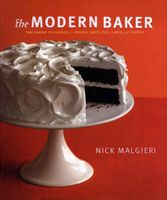Advertisement
Making a “Dry” Caramel
Published 2008
Moisten the sugar with a little lemon juice or water as specified in the recipe. Acids work best, but if the caramel is to be diluted with milk or cream later on, using an acid during this phase will result in a curdled final mixture. Work the liquid evenly into the sugar—it should look like wet sand. Place over medium heat and wait until the sugar starts to melt—you’ll see a wisp of smoke coming from the center of the pan. Use a large metal kitchen spoon to stir the sugar a little after it starts to melt. Avoid stirring too much, or the sugar will begin to recrystallize and form lumps. As the sugar melts more, decrease the heat to low. Test the color of the caramel by letting some fall from the spoon back into the pan—it always looks darker in the pan. If the caramel is still very light, slide the pan off the heat and let it continue cooking from the heat retained by the pan. Dilute or use the caramel as soon as it is a deep amber color—if it is too light it won’t have enough caramel flavor; if it is too dark it will be bitter.


